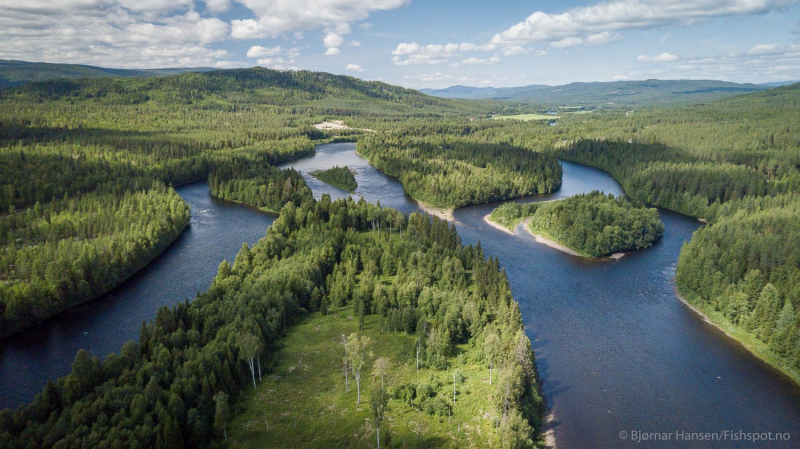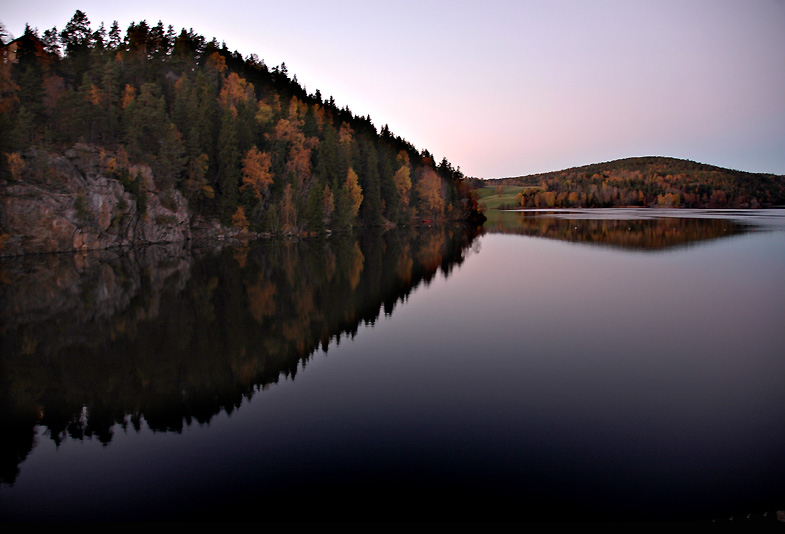Glomma

The Glomma, or Glåma, is Norway's longest and largest river. With a total length of 621 kilometers (386 miles), it has a drainage basin that covers fully 13% of Norway's surface area, all of which is located in the country's south.
At its longest, the river flows from Lake Aursund near Røros in Trøndelag to the Oslofjord at Fredrikstad. The Vorma River, which drains Lake Mjøsa and joins the Glomma River at Årnes in Nes, is a major tributary. The Lågen drains into Lake Mjøsa, collecting drainage from the large Gudbrandsdalen and increasing the flow of the Glomma significantly.
Because it flows through some of Norway's richest forest districts, it has long been the country's leading log-floating river. The combination of raw materials, water power, and easy transportation has encouraged industry along the Glomma for centuries. Some of the country's largest manufacturing and processing concerns are concentrated near the river's mouth, where abundant supplies of timber and hydropower are complemented by excellent port facilities.
The upper limit of the Glomma valley farms varies, but it is usually around 500 metres (1,600 ft) in Østerdalen, which is slightly lower than in Gudbrandsdalen due to the colder climate. In Østerdalen, the treeline rises to about 900 meters (3,000 feet) with a light birch forest. The forest is restricted to the valley floor above Røros.
Norwegian river upper valleys have distinct names that are remnants of earlier cultural distinctions such as building styles, traditional clothing or bunad, and domestic crafts. The Østerdal is the upper valley of the Glomma (or East Valley).
The Glomma has formed Europe's largest inland delta upon entering Lake Øyeren at Fetsund, reaching the opposite side of the lake across its short axis. Some of the massive amount of silt deposited by the Glomma in Lake Øyeren is extracted to make LECA building blocks, which are widely used in the construction of foundations in Norway.
Length: 621 km (386 mi)











